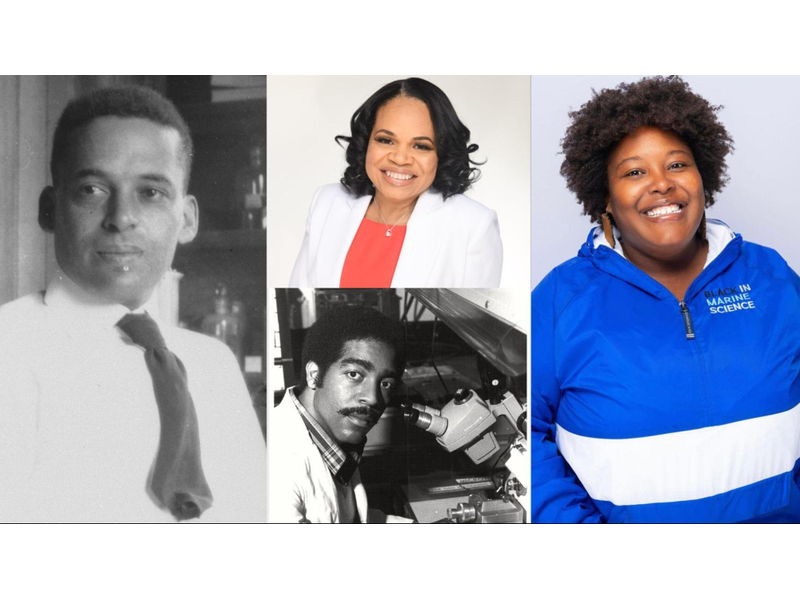
Marine science is one of the least diverse fields in science, technology, engineering, and mathematics (STEM). An estimated 74.7% of the profession is white, with only 2.3% of the field comprised of Black individuals. Inclusion in this field is a struggle for many Black marine scientists. Black people in America have a historically tumultuous relationship with the water stemming from the transatlantic slave trade, slavery, and postbellum segregation
Whether it be the expansion of knowledge on deep-sea coral species or the modern usage of online mapping tools, Black scientists have been part of the equation in propelling marine science to new levels. The marine sciences would not be what they are today without the significant contributions of some of these historical trailblazers, and the future looks bright for Black kids wanting to enter this intriguing science field, with many current rising marine biology stars to follow.
Ernest Everett Just
Ernest Everett Just is widely regarded as the first Black marine biologist. Born in Charleston, SC in 1883, Just was raised during the emergence of Jim Crow laws and widespread disenfranchisement which created a pervasive belief that minorities were second-class citizens. Known as an intelligent and inquisitive student, Just studied at Kimball Union Academy in New Hampshire before enrolling at Dartmouth College.
It was during his university years that Just discovered an interest in biology after reading a paper on fertilization and egg development. This bright young man earned the highest grades in Greek during his freshman year and was selected as a Rufus Choate scholar for two years. He graduated as the sole magna cum laude student in 1907, also receiving honors in botany, sociology and history.
Just also served as editor of three scholarly periodicals and, in 1915, won the NAACP’s first Spingarn Medal for outstanding achievement by a Black American. From 1920 to 1931, he was a Julius Rosenwald Fellow in Biology of the National Research Council and worked in Europe when racial discrimination hindered his opportunities in the United States. Just authored two books, Basic Methods for Experiments on Eggs of Marine Animals, and The Biology of the Cell Surface both in 1939. During this time, Just penned many research papers, including the 1924 publication “General Cytology,” which he co-authored with respected scientists from Princeton University, the University of Chicago, the National Academy of Sciences, and the Marine Biological Laboratory.
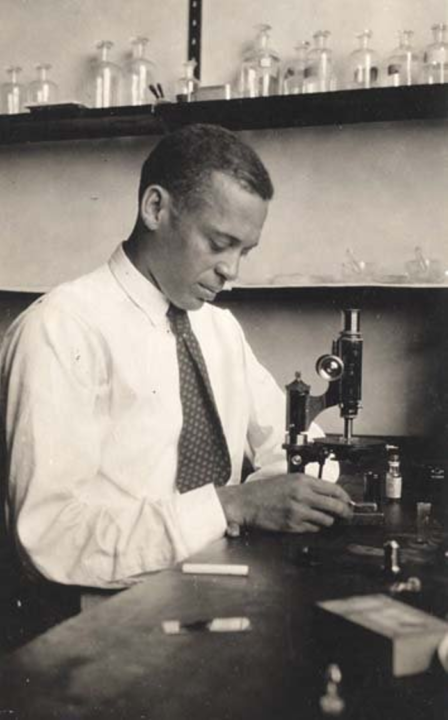
Dr. Tiara Moore
Dr. Tiara Moore is the Founder and CEO of Black In Marine Science (BIMS) and the BIMS Program Lead at The Nature Conservancy in Washington. Born in Philadelphia, Pennsylvania, and raised in Greenwood, South Carolina, Dr. Moore is a dynamic and exuberant leader who has dedicated her career to creating equity in marine science. Dr. Moore has a B.S. in Biology from Winthrop University and a M.S. in Biology with a concentration in Environmental Science from Hampton University. Here she researched the water quality of the Chesapeake Bay linking sediment oxygen demand and nutrient cycling to the eutrophication of the Bay. She then spent 2 months in Bali, Indonesia identifying the diversity and abundance of meiofauna in marine sediments across the coral triangle.
Dr. Moore earned her Ph.D. in Biology from the University of California Los Angeles (UCLA) where she conducted research in Mo’orea, French Polynesia, Carpinteria Salt Marsh, and Upper Newport Bay. In Mo’orea, she observed the effects sedimentation and nutrient pollution have on the proliferation of coral reef macroalgae. In Carpinteria and Newport, she explored the effects of macroalgal decomposition on sediment biogeochemistry and the microbial community using environmental DNA (eDNA) to assess the biodiversity of entire ecosystems with only a soil sample.
In 2020, Dr. Moore created #BlackinMarineScienceWeek to celebrate the contributions of past and current Black marine scientists, deepen understanding of climate change and ocean literacy, and connect Black marine scientists around the world. Since then, the group has grown rapidly from a week of activities to a robust 501(c)(3) nonprofit organization with full-time staff, a board of directors, and over 350 members representing 31 countries. Inside and outside of the lab, Dr. Moore hopes her biodiversity research will translate to increasing the overall diversity in science. She dedicates her time to mentoring minority women in the lab and after-school programs.

Dr. Roger Arliner Young
Roger Arliner Young grew up in Burgettstown, Pennsylvania. In 1916, she entered Howard University. Young enrolled at Howard University at 27, intending to major in music. After struggling through a biology course with African American biologist Ernest Everett Just, she changed her major to that subject, earning a B.S. in 1923. Just hired her as an assistant professor at Howard while she attended graduate school. The following year, Young enrolled at the University of Chicago in Illinois part-time and published her first article on paramecium which achieved international recognition. She received her M.S. in Zoology in 1926 and was elected to the honor society Sigma Xi.
Just invited Young to work with him during the summers at the Marine Biological Laboratory, Woods Hole, Massachusetts, starting in 1927. Young assisted him with research on the fertilization process in marine organisms. She also worked on the processes of hydration and dehydration in living cells. Her expertise grew, and Just called her a “real genius in zoology.”
Early in 1929, Young stood in for Just as head of the Howard zoology department while Just worked on a grant project in Europe. It was the first of many trips to Europe for Just and the first of many stand-in appointments for Young. In the fall of that year, Young returned to Chicago to start a Ph.D. under the direction of Frank Lillie, the embryologist who had been Just’s mentor at Woods Hole. But she failed her qualifying exams in January 1930. In June 1937, she went to the University of Pennsylvania to begin a doctorate under L. V. Heilbrunn, who had befriended her at Woods Hole and gave her the aid she needed to continue. She earned her Ph.D. in 1940. Between 1940 and 1953, she taught at North Carolina College and Shaw University, where she served as the Biology Department Chair.
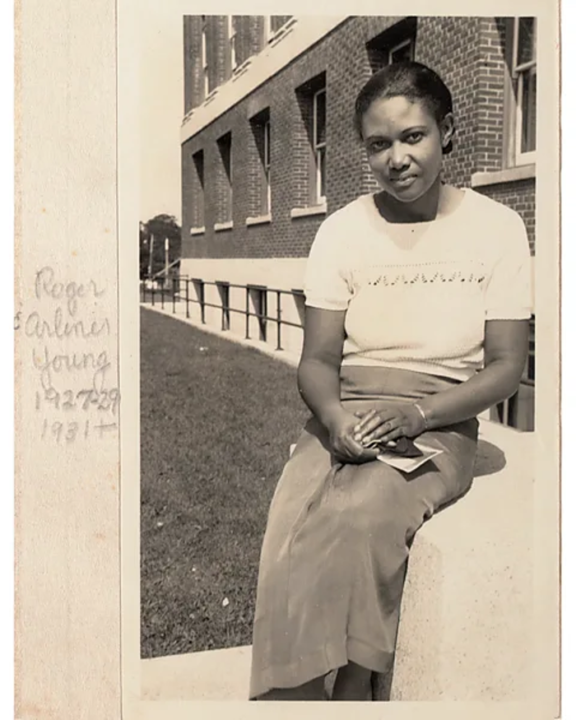
Evan B. Forde
Evan B. Forde, an internationally recognized oceanographer, opened the door for Black scientists to participate in submersible research dives. Forde earned his B.A. degree in geology with an oceanography specialty and his M.A. degree in marine geology and geophysics from Columbia University in the City of New York. Beginning his career with NOAA’s Atlantic Oceanographic and Meteorological Laboratory in 1973, Forde made history in 1979 when he became the first Black scientist to participate in research dives aboard a deep-sea submersible. Since this inaugural dive, Forde has traversed several submarine canyons and has conducted research across numerous meteorological and oceanographic disciplines.
Forde remains one of only a handful of African American oceanographers in the United States. Forde has conducted research in several oceanographic and meteorological disciplines and has been a versatile pioneer in scientific research. His current research includes using satellite sensors to observe and analyze atmospheric conditions related to improving hurricane forecasting and intensity prediction models. In 2011, he also received the NOAA Administrator’s (Under Secretary of Commerce) Award for outstanding communication of NOAA science. Additionally, Forde has been the recipient of a host of career and community awards that include being named NOAA’s Environmental Research Laboratories EEO Outstanding Employee.
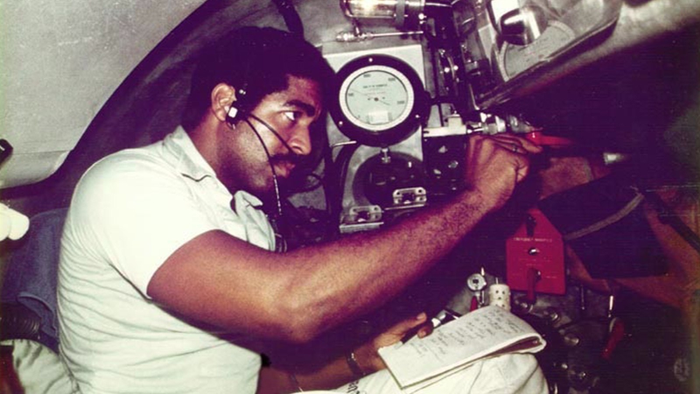
Ashanti Johnson
Ashanti Johnson is one of the first Black female chemical oceanographers and became the first Black student to graduate with a Ph.D. in Oceanography from Texas A&M University. Her research in environmental aquatic radiogeochemistry is internationally recognized, using biogeochemical indicators to interpret previous events that have impacted the marine, estuarine, and freshwater environments in the Arctic, as well as the southeastern coastal regions of the United States. Johnson is also widely regarded as an expert on STEM professional development, diversity, and women in STEM topics. Her areas of research include environmental aquatic radio geochemistry and professional development of students and early-career scientists. Her radio geochemistry research activities utilize various biogeochemical indicators to interpret past events impacting marine, estuarine, and freshwater environments.
In addition to serving as an aquatic scientist and conducting research, Johnson has gained over 15 years of senior leadership experience in university, non-profit, and K-12 organizations. She has served as an associate professor of chemistry at Fort Valley State University, an associate professor of environmental science, an assistant vice provost at the University of Texas at Arlington, and executive director of the Institute for Broadening Participation. She also held faculty positions at the Georgia Institute of Technology School of Earth and Atmospheric Sciences, the Savannah State University Marine Science Program, and the University of South Florida College of Marine Science. Most recently she received the prestigious American Geophysical Union (AGU) Excellence in Geophysical Education Award, the AGU Ambassador Award, and was recognized as an AGU Fellow.
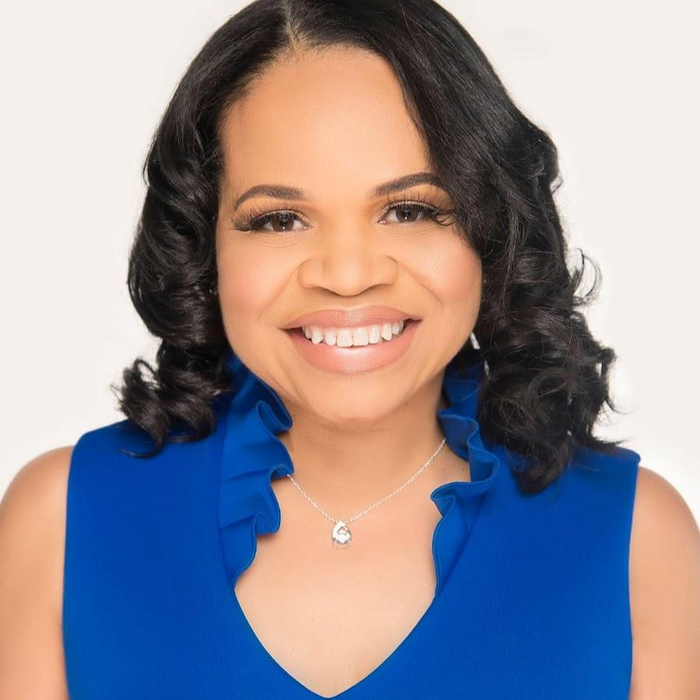
Dr. Rashid Sumaila
Rashid Sumaila is a Professor and Canada Research Chair in Interdisciplinary Ocean and Fisheries Economics at the Institute for the Oceans and Fisheries, and the School of Public Policy and Global Affairs, University of British Columbia. His research focuses on bioeconomics, marine ecosystem valuation, and the analysis of global issues such as fisheries subsidies, marine protected areas, illegal fishing, climate change, marine plastic pollution, and oil spills. Sumaila has experience working in fisheries and natural resource projects in Norway, Canada, and the North Atlantic region, Namibia and the Southern African region, Ghana and the West African region, and Hong Kong and the South China Sea. His work on international fisheries subsidies has impacted the World Trade Organization (WTO) negotiations as a key representative of the #StopFundingOverfishing campaign to WTO and its national government members.
Sumaila has published extensively, including in Science, Nature, and the Journal of Environmental Economics and Management. He is the winner of the 2023 Tyler Prize for Environmental Achievement, the 2017 Volvo Environmental Prize, the 2017 Benchley Oceans Award in Science; the 2016 UBC Killam Research Prize; the 2013 American Fisheries Society Excellence in Public Outreach Award; the 2009 Stanford Leopold Leadership Fellowship and 2008 Pew Marine Fellowship. This year, Dr. Sumaila joins the IUCN Union as a welcome member of the Commission on Ecosystem Management (CEM).
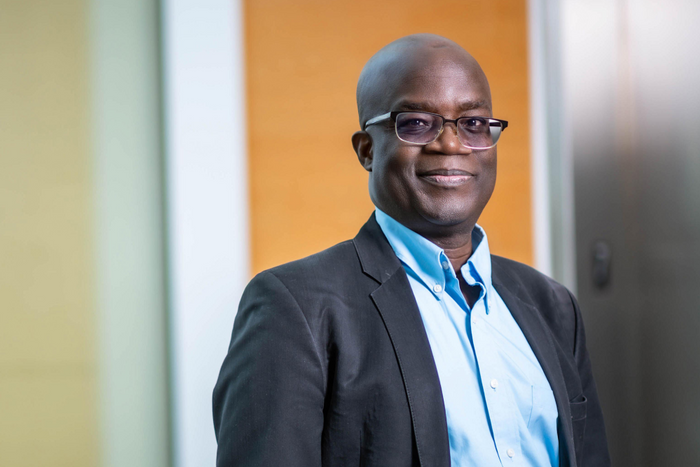
Joan Murrell Owens
Joan Murrell Owens was a coral biologist and teacher born in Florida in 1933. Born and raised by the sea with a fisherman for a father, Joan Murrell Owens was fascinated by the ocean from an early age. Inspired by books like Jacques Cousteau’sSilent World, as well as fishing trips with her father, Dr. Owens was fascinated by the ocean from a young age. She was the first Black American woman to be awarded a geology Ph.D. in addition to her degrees in fine art and guidance counseling. She received a bachelor’s of fine arts from Fisk University, a historically Black university in Nashville, Tennessee, and later returned to school at the age of 37, eventually earning her bachelor’s, master’s, and doctorate degrees in Geology from George Washington University in Washington, D.C. For her PhD thesis and later as a professor at Howard University, Owens studied button corals from the 1880 Albatross collection. She built upon the work of Don Squires, a prominent coral biologist at the Smithsonian.
Using his manuscript as an initial blueprint, she meticulously cataloged the physical properties of each button coral in the collection. By the end of her time at the Smithsonian Owen would discover a new genus of button coral—the Rhombopsammia— along with three new species, which she named after a snowflake, Squires, and her husband. She also published a hypothesis for why these deep-sea corals were mobile, unlike the majority of shallow-water corals. Despite her academic achievement, Owens found her greatest joy in her students. A professor at Howard University, Owens spent the academic year teaching and the summer months furthering her research. She was the only woman in the geology department, and many of her students had never met a woman teacher before, never mind a woman scientist. Her legacy is one of breaking barriers and enabling others to follow in her wake.
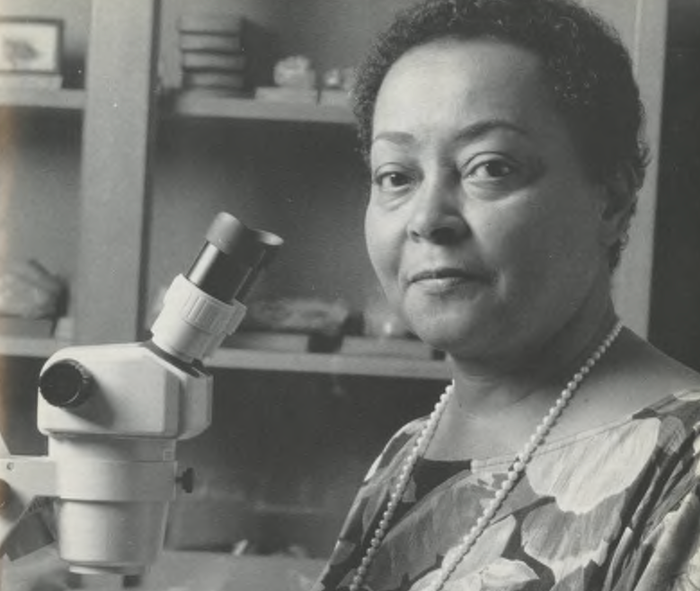
Robert Kent Trench
Robert Kent Trench is recognized as one of the most influential Black marine biologists. He earned a Ph.D. in zoology from the University of California, Los Angeles (UCLA) in 1969, and went on to teach at Yale University for four years and then at UC Santa Barbara until he retired in 2000. Through his research, he garnered a reputation as the world’s leading expert on the relationship between corals and their symbiotic algae, zooxanthellae, where the corals provide shelter for the algae in return for energy that the algae derive from sunlight.
Trench’s areas of expertise encompassed coral reef ecology, physiology, biochemistry, phylogenetics of symbiosis, and intercellular recognition phenomena. He taught for four years at Yale University before arriving at UC Santa Barbara in 1976. While a professor of biology at the University of California at Santa Barbara, Robert Kent Trench earned the reputation as the world’s leading expert on corals and their symbiotic algae, more specifically strains of zooxanthellae adaptation to certain coral species.
The author of several dozen scientific papers, in 1994 his groundbreaking description of metabolite flux from kleptochloroplasts to host won him the coveted Miescher-Ishida Prize for outstanding contribution to the field of endocytobiology. He was also a prominent member of the American Association for the Advancement of Science and the Society of Limnology and Oceanography.
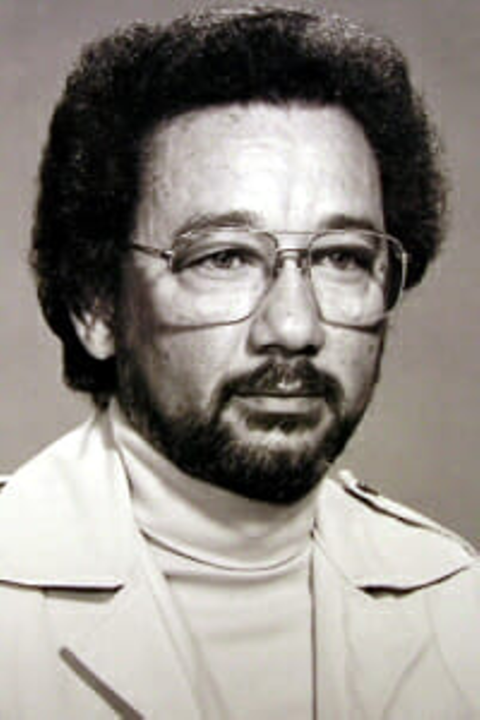
Source
- The Natural Conservancy
- Black In Marine Science
- Oceana
- Black Past
- Natural Marine Sanctuaries
- Scuba Diving
- Oceanbites
- Travel Noire
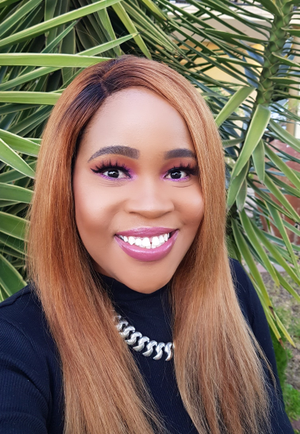
Boitumelo Masihleho is a South African digital content creator. She graduated with a Bachelor of Arts from Rhodes University in Journalism and Media Studies and Politics and International Studies.
She’s an experienced multimedia journalist who is committed to writing balanced, informative and interesting stories on a number of topics. Boitumelo has her own YouTube channel where she shares her love for affordable beauty and lifestyle content.





